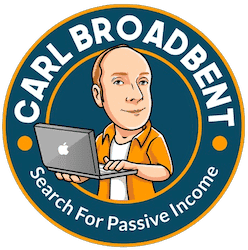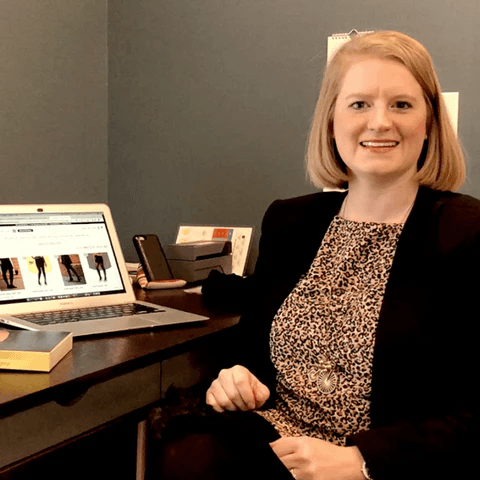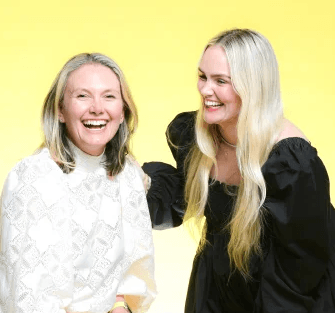How Carl Broadbent Built and Sold 25 Content Sites After Getting Fired


Business Description
Table of Contents
Navigate through the case study sections
Executive Summary
Case Study Content
From Redundancy to Revenue: Carl Broadbent's Path
Stuff goes sideways sometimes. Back in 2017, that's what happened to Carl Broadbent, called into a meeting and handed a pink slip from the job he’d worked for seven years. Career curveballs like that shake anyone. He quickly landed another job managing a supermarket chain in the UK, but the brutal hours and grind felt like trading one trap for another. Burnt out and frustrated, Carl started questioning if there was a way off the hamster wheel. Was it possible to write his own story?
First Steps: A Quick Start in Affiliate Content
With determination (and a healthy dose of anxiety), Carl dove into the search for online income ideas. He struck gold after watching a YouTube tutorial about building niche websites for profit, something most people click past but never act on. On the very same day he watched, he launched his first site about Monty Python, a choice driven by pure enthusiasm for the comedy troupe. Result? Not much traction. But he didn’t stop there. Carl pivoted to his next project: a niche website about tropical fish, a subject he actually knew inside and out from a teen job at a pet shop. That old experience gave him enough material to write and his new site was born. He was off to the races.
Breakthrough: Expert Coaching Changes Everything
For months, Carl pushed articles and learned by doing. About eighteen months in, a bit of luck, a comment on an Income School YouTube video landed him in a free coaching session. The founders flew out from the US and spent two days with Carl, helping him organize, set goals and streamline his process. That hands-on help meant a lot, but Carl stresses he was already growing the site through grind and persistence beforehand. The biggest change? He started running his new projects with more order, goal-setting, and focus on the end game: recurring revenue and sale price.
Monetization and Scaling: Portfolio Over Projects
One of Carl’s core philosophies: don’t bet everything on a single site. He created a portfolio of niche content sites, each designed to rank in search, monetize via affiliate offers and display ads, and, most importantly, to be sold the moment it passed a certain threshold. Unlike entrepreneurs who hold on forever, Carl set his sell target around $20,000–$30,000 per site. Sell fast, take the cash, cycle profits into new sites. Over five years, he’s sold 25 websites using this repeatable formula. He skips listing sites on marketplaces, using his direct network to broker off-market deals quickly, this built a sense of trust and opens doors for bigger, riskier projects in the future. His community, mostly fellow content creators, is a huge asset here.
Timing the Jump to Full-Time
Carl’s leap to full-time digital entrepreneur didn’t happen overnight. A self-proclaimed cautious type (with family obligations), he waited until his web income consistently tripled his full-time salary before handing in his resignation in 2020. Three years from zero to 3X salary: not instant, but not slow either. After that, he doubled down: more sites, more experimentation, and he started splitting his time into monthly recurring revenue and 2–3 annual “lump sums” from quick site exits. This mix insulated him from sudden dips in ad revenue or algorithm hits.
Content Strategy: Longtail SEO to Multi-Channel Tactics
For a while, the playbook was straightforward, find longtail keywords, write content, rank, rinse, repeat. But the ground shifted with Google’s algorithm updates (especially the Helpful Content Update). Rankings dipped across the industry. Carl responded quickly by reorganizing his content approach: instead of one-off SEO posts, he built topic clusters that answered bigger questions and appealed to both niche readers and search engines. He leaned hard into social media and YouTube, figuring out quickly that video and shortform content ROI was higher than long-form articles. “Video delivers, plain and simple, ” Carl says. He posts regularly on his YouTube channel, now with 11,000+ subscribers, to drive new traffic and build authority, less reliant on Google’s whims.
Smart Exits: Fast Sales and Reinvestment
Holding sites forever? Not his style. Carl prefers selling before any plateaus or downturns bite into site value. After hitting his valuation targets, he contacts connections, negotiates privately, and closes deals off-market. These regular “cash injections” not only fuel new site launches but let him test digital products, run public case studies, and fund side projects without pressure. Sites under $50K, he says, are much easier to shift quickly, sidestepping the tedious process and wide audience required by large deals.
Community Building: Affiliate Gathering and Side Projects
Carl didn’t stop at websites. Noticing how lonely and unpredictable the niche blogging world could be (especially after a big algorithm update), he launched Affiliate Gathering, a flagship in-person UK event for bloggers and website creators seeking mutual support. The conference has grown each year, blending talks, workshops, and masterminds. Longview, Carl wants to take it international and build a true annual hub for the community. Meanwhile, he experiments with “faceless” YouTube channels and creates tools like the Popcorn WordPress theme tailored specifically for bloggers.
Changing the Metrics: Focusing on Revenue Over Traffic
In a world where big numbers make headlines, Carl’s opinion is clear: “Monetization over traffic.” He’d take a 10K visitor blog making $5,000/month over a traffic monster earning less any day. Tighter targeting, higher value per visitor, and multiple monetization streams, these metrics guide his new project launches and inform every sale. It’s a reaction to evolving algorithms and a reminder that sustainable profits come from value delivered, not vanity stats.
Low Startup Costs, High Flexibility
Most Carl Broadbent projects needed little more than a domain, a reliable WordPress setup, high-quality hosting, and serious hustle. With such low startup costs and the discipline to reinvest profits, scaling became a real possibility for anyone willing to learn and iterate fast. He’s open that some sites failed entirely; quick pivots saved him from large losses. Iteration speed beat perfectionism, every time.
Final Thoughts: Lessons for Aspiring Web Entrepreneurs
Carl Broadbent’s sprint from redundancy to seven-figure portfolio stands as a playbook for anyone burned out by rigid jobs. The critical lessons: Start today, iterate fast, build for income not just traffic, and don’t hesitate to sell for a profit before burnout or market shifts destroy site value. Use your network, give back to your community, and never trust a single income stream. If you’re thinking about switching careers, his journey shows what’s possible, even for those with no prior experience, just a fierce work ethic and a strong strategy. Just remember, expect to make mistakes, learn fast, and rinse and repeat.
Key Takeaways
- 1Carl Broadbent built and sold 25+ content websites after losing his traditional job.
- 2He focuses on creating, monetizing, and quickly selling niche sites in the $20-30K range.
- 3Carl diversified income using display ads, affiliate marketing, and YouTube content.
- 4A strong peer network and community events like Affiliate Gathering fueled off-market website sales.
- 5Carl adapted to Google's algorithm changes by shifting from pure SEO to social and video content.
- 6His main lesson: prioritize monetization over traffic, reinvest profits, and pivot when projects stall.
Tools & Technologies Used
Premium Content Locked
Subscribe to access the tools and technologies used in this case study.
Unlock NowHow to Replicate This Success
Premium Content Locked
Subscribe to access the step-by-step replication guide for this case study.
Unlock NowInterested in Being Featured?
Share your success story with our community of entrepreneurs.
Explore More Case Studies
Discover other inspiring business success stories

How Hipstiks Redefined Hosiery and Achieved a $200K Exit with Smart SEO
Hipstiks was created by Laura and Jason, a couple threading their marketing experience into a bold e-commerce play. They...
Hipstiks

How Ultraviolet Sunscreen Became a $15M Beauty Brand
Former Mecca buyers Ava Matthews and Rebecca Jefferd saw sunscreen as a daily skincare gap. They quit their jobs, invest...
Ultraviolet

From Policeman to $18K/Month Solo Affiliate Marketer
Roman Bobelyuk went from policing streets to mastering iOS programming on YouTube, then pivoted into solo affiliate mark...
Roman Bobelyuk Media Buying
